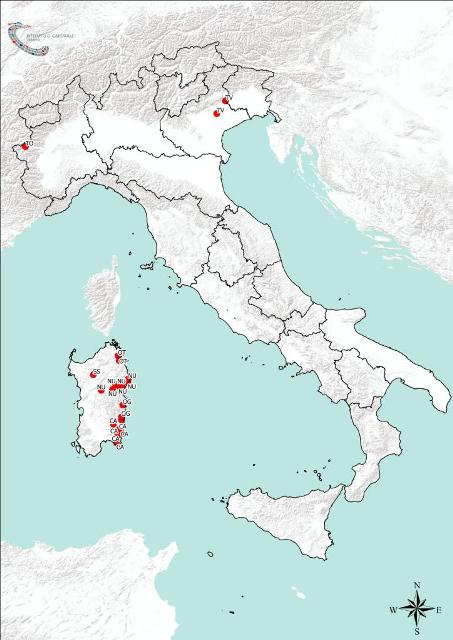Re: Schmallenberg virus : new Akabane-like virus in cattle, sheep and goats in Europe
France: 99 new SBV cases from september
12 december 2012
France started SBV surveillance again in september.
Untill december 12, 99 new cases were found: in 65 sheep holdings, 10 goat hoaldings and 44 cattle holdings.
The document has a map, showing a scattered pattern.
France: 99 new SBV cases from september
12 december 2012
France started SBV surveillance again in september.
Untill december 12, 99 new cases were found: in 65 sheep holdings, 10 goat hoaldings and 44 cattle holdings.
SBV cong?nital : Situation ?pid?miologique
Point de situation au 12 d?cembre 2012
Nombre et localisation des foyers
Depuis le 1er septembre 2012, ce sont au total 119 suspicions qui ont ?t? enregistr?es
(65 ?levages ovins, 10 ?levages caprins, et 44 ?levages bovins).
99 ?levages ont ?t? confirm?s atteints par des formes cong?nitales de SBV, r?partis dans 34
d?partements : 03, 04, 05, 08, 10, 12, 17, 18, 19, 2A, 24, 25, 27, 28, 31, 34, 37, 38, 42, 44, 58, 65, 67, 68,
69, 70, 73, 74, 76, 77, 81, 84, 86 et 89. Sont concern?s : 59 ?levages ovins, 7 ?levages caprins et 33 ?levages bovins.
Survepi
Point de situation au 12 d?cembre 2012
Nombre et localisation des foyers
Depuis le 1er septembre 2012, ce sont au total 119 suspicions qui ont ?t? enregistr?es
(65 ?levages ovins, 10 ?levages caprins, et 44 ?levages bovins).
99 ?levages ont ?t? confirm?s atteints par des formes cong?nitales de SBV, r?partis dans 34
d?partements : 03, 04, 05, 08, 10, 12, 17, 18, 19, 2A, 24, 25, 27, 28, 31, 34, 37, 38, 42, 44, 58, 65, 67, 68,
69, 70, 73, 74, 76, 77, 81, 84, 86 et 89. Sont concern?s : 59 ?levages ovins, 7 ?levages caprins et 33 ?levages bovins.
Survepi



Comment